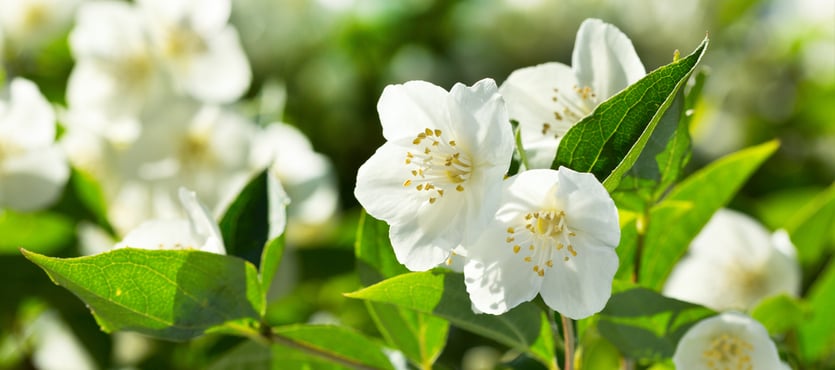While spring and summer are known for an abundance of colorful blooms, winter gardens are thought to be a bit bland. It doesn’t have to be that way, in fact, there exists a vast array of beautiful blooming winter plants. Indoors and out, you can choose flowering plants for your container gardens and enjoy the incredible burst of floral color all winter long! Let’s explore some options for you to fill your pretty planters will blooms this winter.
- Jasmine – Jasmine delivers delicate white flowers during the holidays the perfect complement to seasonal décor. Keep your Jasmine exposed to bright natural daylight followed by cool temperatures during the evening hours and watered just enough to keep the soil moist to coax the beautiful white blooms just in time for the holidays.
- English Violet – Known formally as Viola Odorata, as well as Sweet Violet, this small flower offers up blooms of purple, blue, or white, overflowing with sweet fragrance. English Violets thrive in well-drained soil, and bloom from late winter to early spring. Sweet Violets can flourish easily inside your home when provided with direct sun exposure.
- Camellia – Depending on your location, Camellias can thrive outdoors offering up lush red, white, or pink flowers amid evergreen leaves. Camellias bloom from autumn to winter and come in a number of varieties, some of which will be ideal for your region and climate.
- Cyclamen – Cyclamen is a holiday favorite, presenting red, purple, or white flowers amid heart-shaped leaves. These winter bloomers thrive in temperatures which hover around 65°F or lower and enjoy filtered indirect sunlight. If you like to keep your home warmer than 65°F during the winter months, there are also varieties of Cyclamen which enjoy higher temperatures.
- Streptocarpus – Streptocarpus, a distant cousin of the African Violet, offers the promise of velvety purple petals on a hardy winter plant. The brilliant purple bloomers enjoy a cool environment in filtered light, and they won’t even mind if you forget to water them. When you do remember, a little water can often bring them back to life, blooming for long periods of time, much to your delight.
- Winter Begonias – Don’t be confused, not all begonias are winter-flowering, but those that are produce pink flowers with yellow centers among the familiar heart-shaped begonia leaves. Winter begonias begin blooming as the days grow shorter, with the promise of the brightness of summer to winter days.
- Hellebores – Hellebores flowers – green, pink, purple, red, and even black – bloom on their low-growing plants in early winter, just in time for Christmas. Choose among the many varieties of Hellebores for pops of color all winter long. An added bonus, unlike some other winter flowers, Hellebores does not attract deer to your garden.
- Winterberry – Winterberry is a native North American holly which loses its leaves in winter, making way for berry-covered branches, the perfect complement for winter snows. The berries last all winter, and while not technically flowers, the winterberry fruits are just as vibrant and beautiful.
- Sarcococca – The winter plants begin small, but quickly grow to tall and majestic resplendent with shimmering foliage and pretty white flowers. Sarcococca is perfect for planting near walkways or porches, so that all who pass can enjoy its beauty as well as its sweet scent.
- Pieris – These beautiful evergreens, also known as Andromedas, showcase pink or white bell-shaped flowers dangling amid the branches. The striking Pieris blooms beautifully in mid to late winter.
Healthy Growing Tips
For you potted plants choose high quality planters from TerraCast Products like the lovely Fluted Vase. Place your indoor plants in an area with ample sunlight according to their preference and keep them watered properly, taking care to avoid overwatering. If your planters are outdoors, choose plants that are hardy enough to thrive in your zone and place them carefully to avoid extreme temperature fluctuations.

